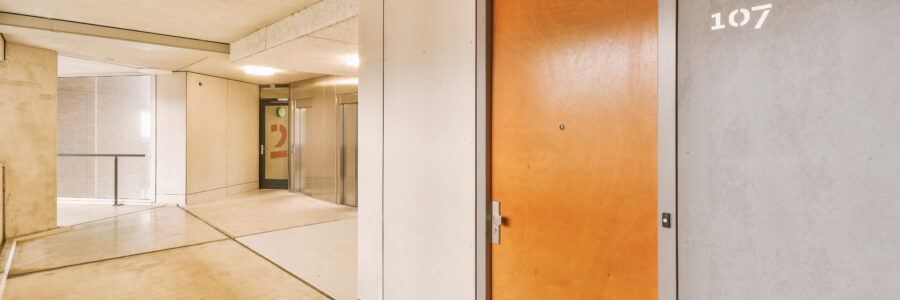What Is A Nominal Fire Door?
All commercial and many residential buildings need to adhere to the stringent rules and regulations regarding fire safety, a major aspect of which are the doors installed within the buildings. All doors must be fire resistant to a specified standard and offer the protection and resistance required for all occupants to successfully evacuate a building in the event of a fire outbreak. In buildings with older existing doors they must be fully checked for damage, any unprotected or unsealed gaps, that they fit, open and close correctly and display no visible fault or damage. Any defects detected must be repaired or the door replaced immediately – many buildings will have what are referred to as “nominal” fire doors – here are some aspects and details of such doors and what to do if they are present in your building:
Nominal Fire Door
Nominal fire doors are those doors that may have the safety and resistance features of fire doors but have not been awarded the official certification of those doors manufactured and tested by an accredited, third-party testing unit and approved formally with the relevant certificates and documentation. An appointed fire door inspector may examine these doors and rule their suitability as fire doors, applying some gravitas to their safety performance, but this will only be based on opinion and cannot be formally recognised as guaranteed fire protection. These nominal fire doors are sometimes referred to as “notional” fire doors and this term often applies to doors that have been in situation for long periods having met previous, earlier fire safety standards that may not have been as stringent as, and have been superseded by, more advanced standards required for modern fire door certification. They may still be fit for purpose if closing properly and do not have gaps around the frame and fixtures, but they should be thoroughly examined by a relevant body or person.
Identifying A Fire Door
Whilst many fire doors look no different in appearance from standard doors within a building, there are ways to distinguish and identify the fire doors. Fire doors should be displaying relevant certification labels to identify them as such – these labels contain information on the door type and the fire-resistance rating. Every fire door has been tested and awarded a specific resistance rating – an FD30 door should offer resistance to all the harmful effects of a fire outbreak (heat, flame, smoke) for a minimum of 30 minutes, whilst an FD60 fire door offers the same resistance and protection for a minimum of 60 minutes, an FD90 door for 90 minutes and so on. Other features such as the width or ‘thickness’ of the doors, those doors fitted with intumescent seals and automatic closing devices also act as obvious, visible identifiers for fire doors. In some cases, if the door has been installed for a long period and was never formally certified, or has had the labelling covered or removed – which should never really happen – then those other physical attributes to which we’ve referred, may identify it as a nominal fire door.
Replacing Nominal Fire Doors
If you have doubts as to safety and performance of nominal fire doors you should organise a risk assessment – caution needs to be applied when making any decisions about fire safety precautions in any building. Ask a qualified fire safety expert to perform a risk assessment on all your doors and to provide a professional judgement as to the expected fire safety performance of the doors in question. A qualified fire door inspector can give an accurate assessment of the materials and overall composition of the nominal fire doors and make a balanced judgement on whether they are fit-for-purpose. If they are deemed to be substandard in any aspect, then the decision must be taken to either repair or replace the nominal fire door. If an expert opinion rules that the nominal fire door would competently provide an acceptable level of resistance in the event of a fire outbreak, then there would be no need for replacement but always be aware that these doors will need more regular maintenance and reassessment as time goes by. Fire safety has to be the major consideration in these matters rather than budget and cost – the protection of the buildings’ occupants is of paramount importance!
Certification
Manufacturers and suppliers of modern fire doors have legal and mandatory standards to adhere to and demonstrate with regards to their doors safety performance – this can only be attained through the independent, third-party testing performed in approved laboratories resulting in formal certification and classification of the doors. If you wish to have existing nominal fire doors officially certified, they must be removed and tested in similar conditions – often a costly exercise. Some accredited contractors can “self-certify” upgrades and repairs to nominal fire doors but, whilst this process offers some assurance regarding the door materials and strengths, the resulting certificates DO NOT guarantee the fire safety attributes or performance of those doors.









